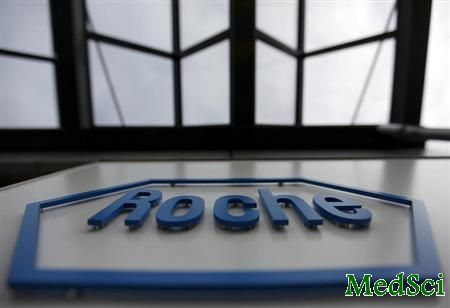安进Xgeva骨巨细胞瘤新适应症申请获FDA批准
2013-07-03 tomato 生物谷
2013年6月16日讯 /生物谷BIOON/ --安进(Amgen)13日宣布,FDA已批准了Xgeva(denosumab)的一个新适应症,用于手术不可切除性或手术切除可能导致严重并发症的骨巨细胞瘤(GCTB)成人患者及骨骼发育成熟的青少年患者的治疗。 GCTB为骨原发的骨破坏性良性侵袭性肿瘤,通常影响20-40岁的个体,往往导致骨折。 Xgeva新适应症的获批,是基于2项开放标签试验,

2013年6月16日讯 /生物谷BIOON/ --安进(Amgen)13日宣布,FDA已批准了Xgeva(denosumab)的一个新适应症,用于手术不可切除性或手术切除可能导致严重并发症的骨巨细胞瘤(GCTB)成人患者及骨骼发育成熟的青少年患者的治疗。
GCTB为骨原发的骨破坏性良性侵袭性肿瘤,通常影响20-40岁的个体,往往导致骨折。
Xgeva新适应症的获批,是基于2项开放标签试验,所招募的患者为复发性或不可切除性或手术切除可能导致严重并发症的GCTB患者。研究中,187例患者中总的客观缓解率为25%,平均响应时间为3个月。客观响应的47例患者中,有51%(24/47)患者响应持续至少8个月,有3例患者在客观响应后病情恶化。
Xgeva在GCTB患者中的安全属性与骨转移患者中的研究报告相似,同时在骨骼发育成熟的青少年和成人患者中相似。有关Xgeva的安全数据在304例至少接受一个剂量Xgeva治疗的GCTB患者中进行了评价,其中145例患者接受治疗至少一年。研究中最常见的不良反应为关节痛、头痛、恶心、腰痛、乏力、肢体疼痛,最常见的严重不良反应为颚骨坏死和骨髓炎。
Xgeva结合RANK配体(RANKL),该蛋白对于骨细胞(osteoclast)的形成、功能及生存至关重要,骨细胞负责骨吸收。骨巨细胞瘤由表达RANKL的基质细胞及表达RANK受体的骨细胞样巨细胞组成。通过RANK受体的信号促进骨溶解和肿瘤的生长。Xgeva能阻止RANKL激活位于骨细胞、前体细胞及骨细胞样巨细胞表面的受体RANK。
Xgeva是安进公司最重要的药物之一,已被批准用于骨转移患者,延缓骨折及肿瘤的生长。(生物谷Bioon.com)
英文原文:FDA Approves Amgen's XGEVA? (denosumab) For The Treatment Of Giant Cell Tumor Of Bone
XGEVA Becomes First FDA-Approved Treatment for This Rare Disease
THOUSAND OAKS, Calif., June 13, 2013 /PRNewswire/ -- Amgen (NASDAQ:AMGN) today announced that the U.S. Food and Drug Administration (FDA) has approved a new indication for XGEVA? (denosumab) for the treatment of adults and skeletally mature adolescents with giant cell tumor of bone (GCTB) that is unresectable or where surgical resection is likely to result in severe morbidity. XGEVA was approved following a priority review by the FDA, a designation reserved for drugs that offer major advances in treatment, or provide a treatment where no adequate therapy exists.
GCTB typically affects individuals between the ages of 20 to 40. The disease is characterized by a bone destructive tumor that often results in fractures. When untreated, it often results in complete destruction of the affected bone, leading to bone fracture, joint dysfunction, deformity or amputation.
The approval of XGEVA is based on positive results from two open-label trials that enrolled patients with GCTB that was either recurrent, unresectable, or for which planned surgery was likely to result in severe morbidity. The overall objective response rate of the 187 patients evaluated was 25 percent. The estimated median time to response was three months. In the 47 patients with an objective response, 51 percent (24/47) had a duration of response lasting at least eight months. Three patients experienced disease progression following an objective response.
The safety profile of XGEVA in patients with GCTB was similar to that reported in studies of patients with bone metastases, and also appeared to be similar in skeletally mature adolescents and adults. Safety data was evaluated in 304 patients with GCTB who received at least one dose of XGEVA. Of these patients, 145 were treated for at least one year. The most common adverse reactions were arthralgia, headache, nausea, back pain, fatigue, and pain in the extremity. The most common serious adverse reactions were osteonecrosis of the jaw and osteomyelitis.
For patients with GCTB, XGEVA is administered as a subcutaneous injection (120 mg) every four weeks with additional 120 mg doses on days eight and 15 of the first month of therapy.
"With today's XGEVA FDA approval, Amgen can offer a much needed treatment option to patients who suffer from giant cell tumor of bone that cannot be adequately treated with surgery," said Sean E. Harper, M.D., executive vice president of Research and Development at Amgen. "Advances in our understanding of the underlying biology of this rare disorder have allowed Amgen to generate compelling clinical evidence to address the medical needs of patients and their healthcare providers."
XGEVA binds to RANK Ligand (RANKL), a protein essential for the formation, function and survival of osteoclasts - the cells responsible for bone resorption. Giant cell tumors of bone consist of stromal cells expressing RANKL and osteoclast-like giant cells expressing RANK receptor. Signaling through the RANK receptor contributes to osteolysis and tumor growth. XGEVA prevents RANKL from activating its receptor, RANK, on the surface of osteoclasts, their precursors and osteoclast-like giant cells.
{nextpage}About Giant Cell Tumor of Bone
GCTB is a locally aggressive, benign tumor afflicting younger adults between the ages 20 to 40. It is estimated that there are approximately 300-800 new cases of GCTB annually in the U.S. GCTB is unresectable in approximately 18-20 percent of cases.
Most tumors occur in the long bones of the body, often around joints, but can also spread to the lungs in rare cases. Although giant cell tumors are slow growing, patients can experience severe bone pain, swelling, loss of mobility and pathologic fracture. Historically, there have been no approved therapies for GCTB. Surgery is the main treatment option for patients with resectable GCTB; however, surgery, such as amputation, may be associated with significant morbidity. These tumors also have a higher recurrence rate within the first three years of surgical intervention. When tumors recur, they become more difficult to treat and more likely to spread to other parts of the body.
(责任编辑:lili.zhao)
本网站所有内容来源注明为“梅斯医学”或“MedSci原创”的文字、图片和音视频资料,版权均属于梅斯医学所有。非经授权,任何媒体、网站或个人不得转载,授权转载时须注明来源为“梅斯医学”。其它来源的文章系转载文章,或“梅斯号”自媒体发布的文章,仅系出于传递更多信息之目的,本站仅负责审核内容合规,其内容不代表本站立场,本站不负责内容的准确性和版权。如果存在侵权、或不希望被转载的媒体或个人可与我们联系,我们将立即进行删除处理。
在此留言











#FDA批准#
84
#适应症#
67
#新适应症#
93
#细胞瘤#
73
#骨巨细胞瘤#
74
#巨细胞#
73